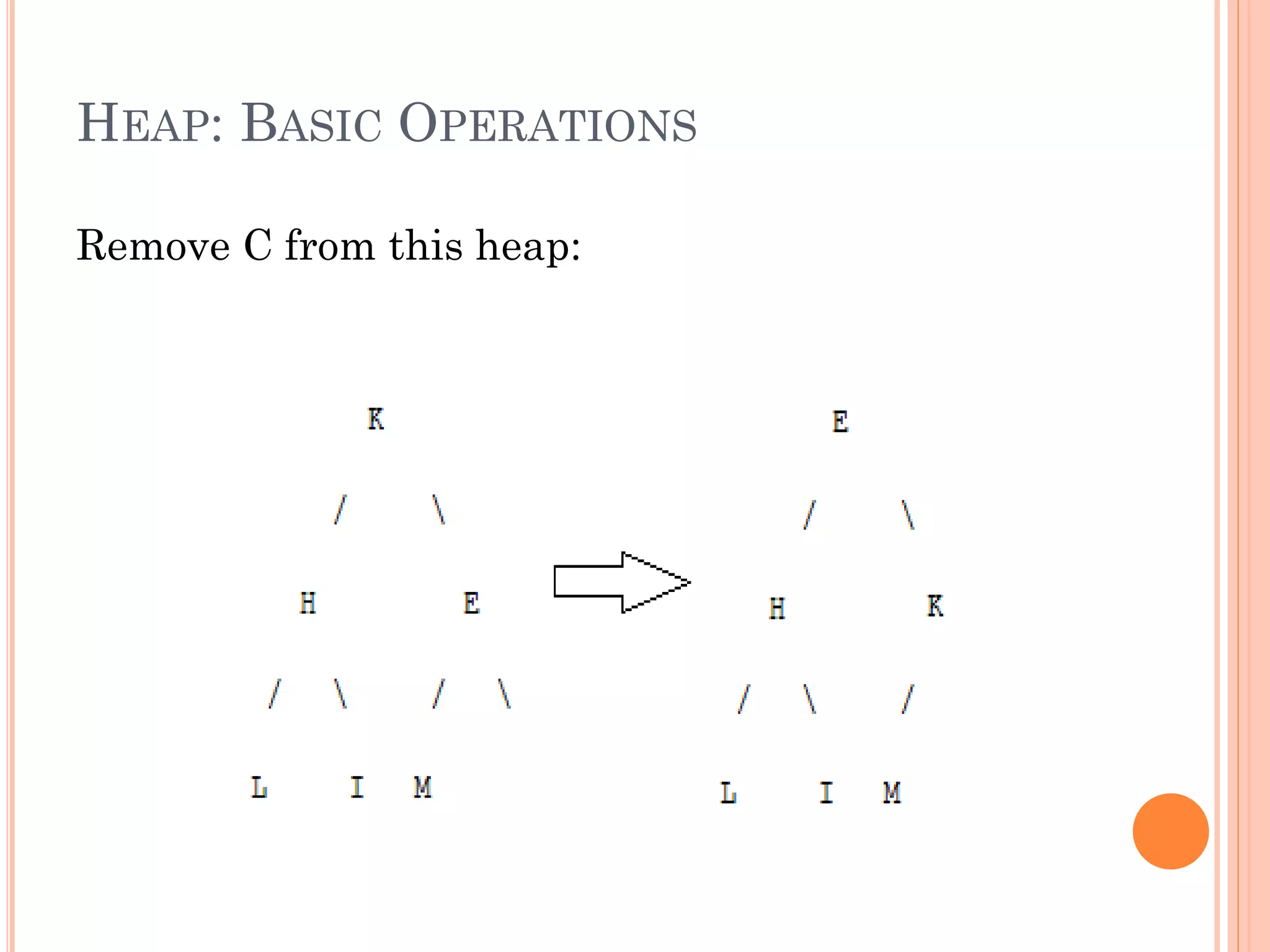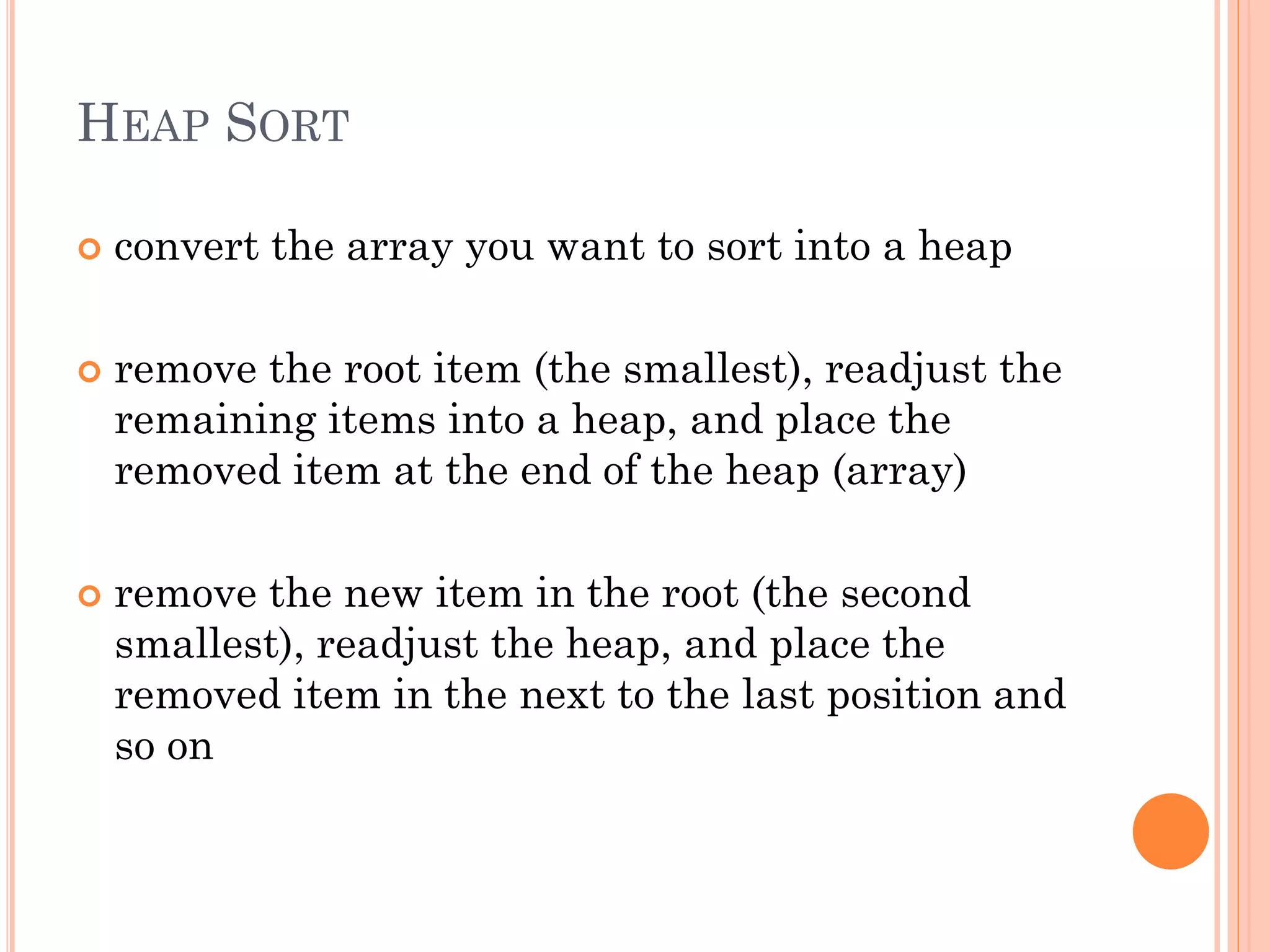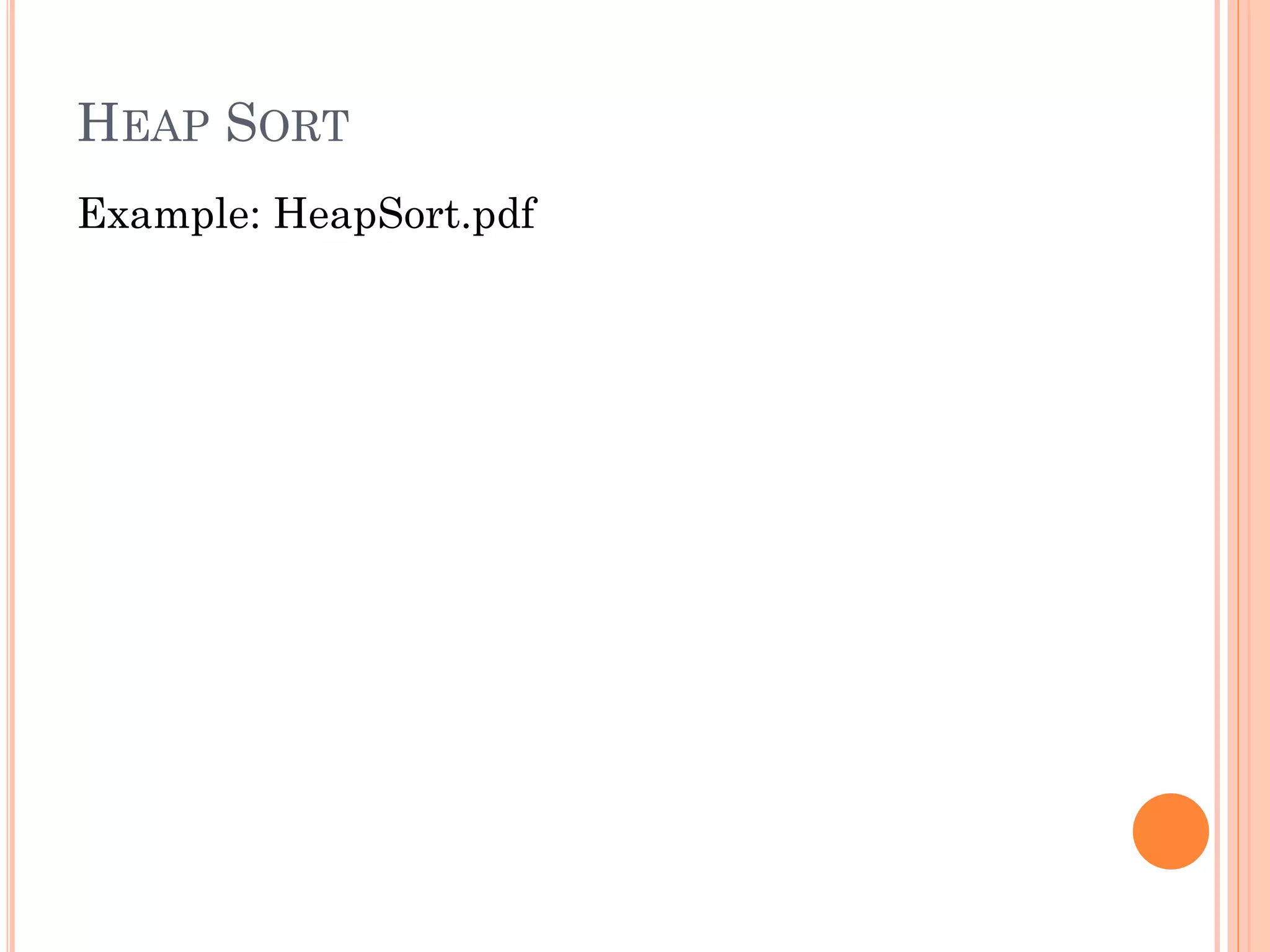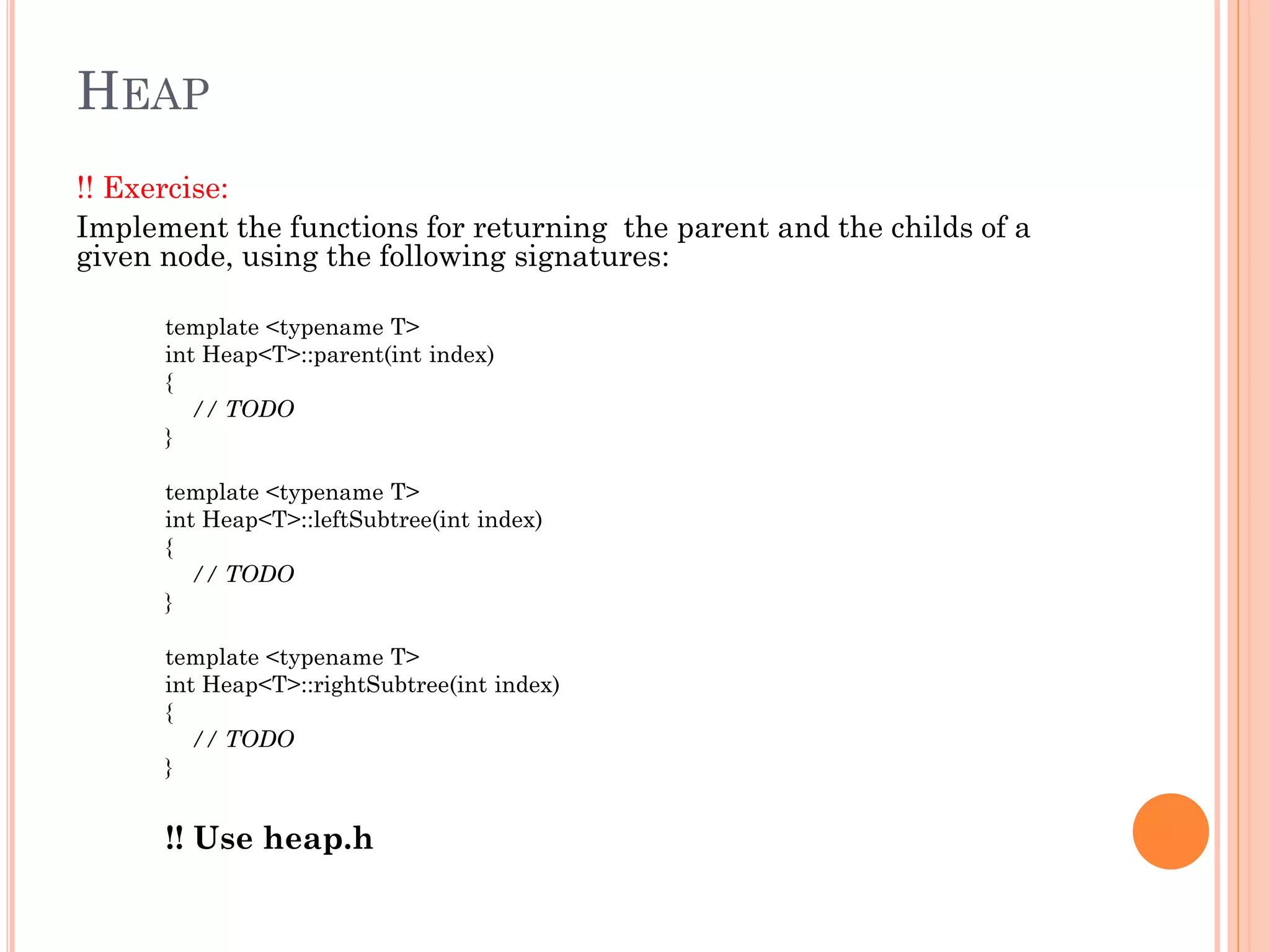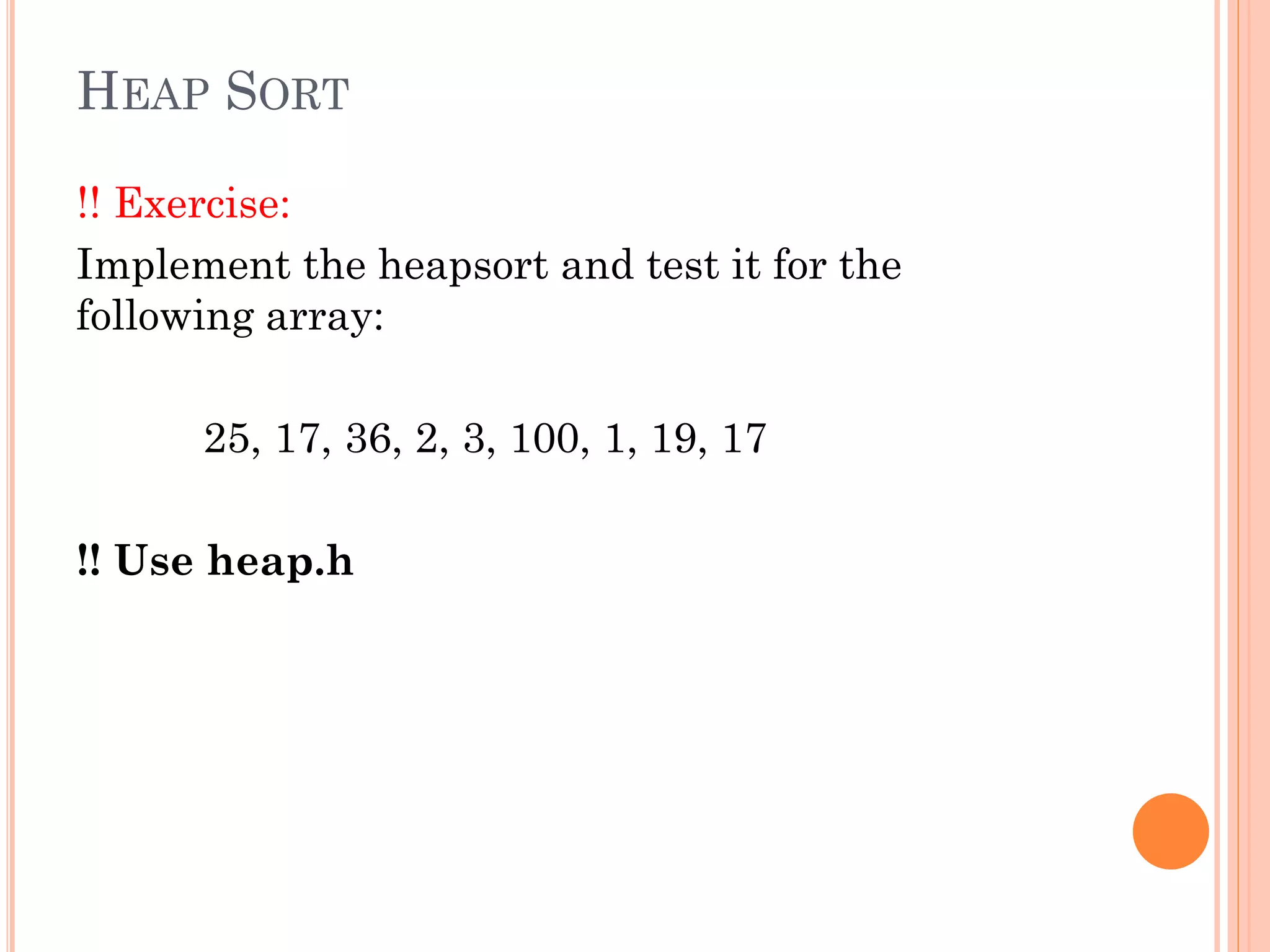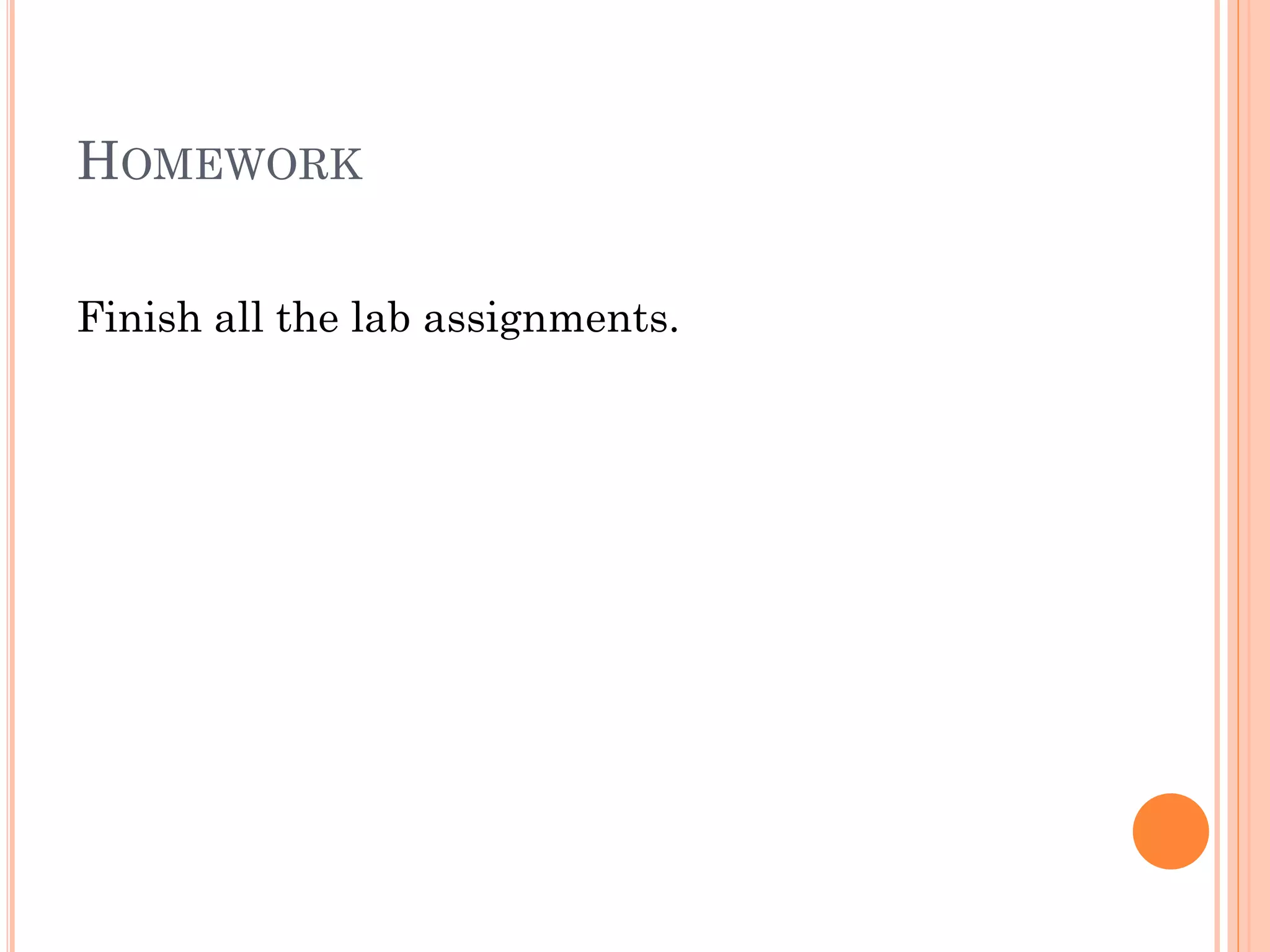This document summarizes a lab on data structures and algorithms that focuses on heaps and heap sort. It introduces heaps as almost complete binary trees stored in an array that obey the max-heap or min-heap property. Basic heap operations like insertion and deletion are described along with filtering an element up or down the heap to maintain the property. Heap sort is then introduced as using a heap to iteratively extract and place the minimum element. The objectives are to implement functions for getting a node's parent and children in a heap as well as implement and test heap sort.
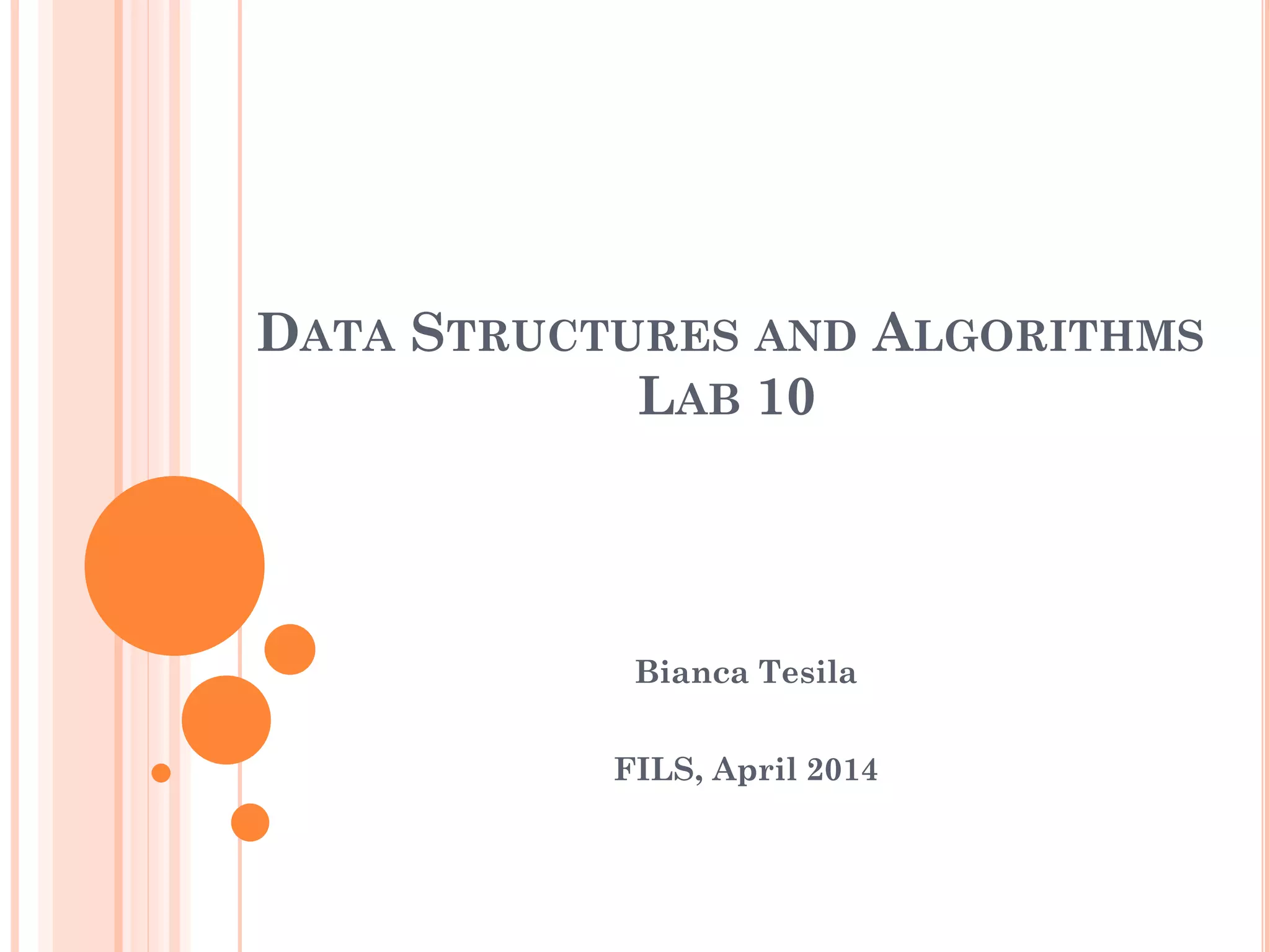
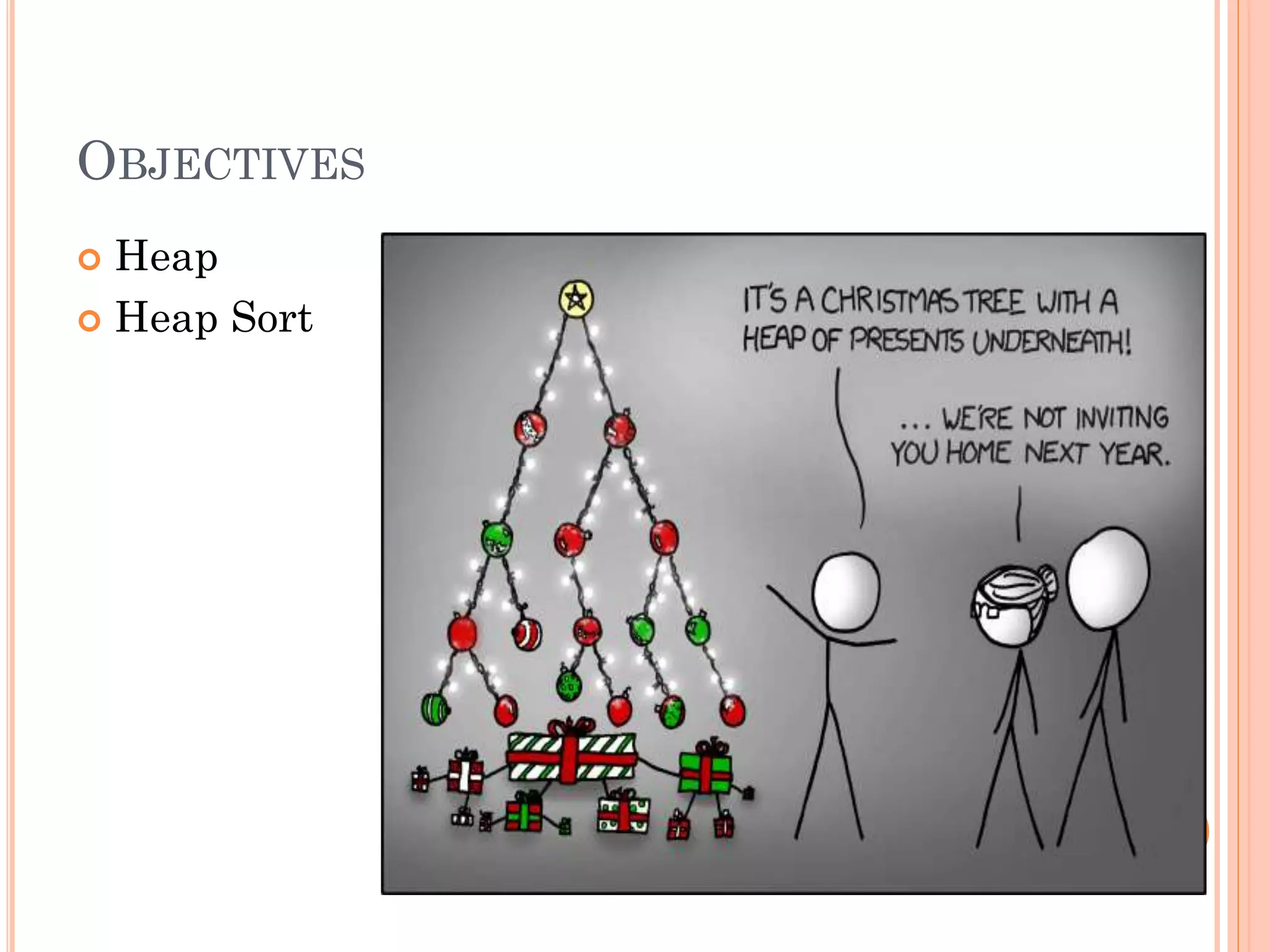
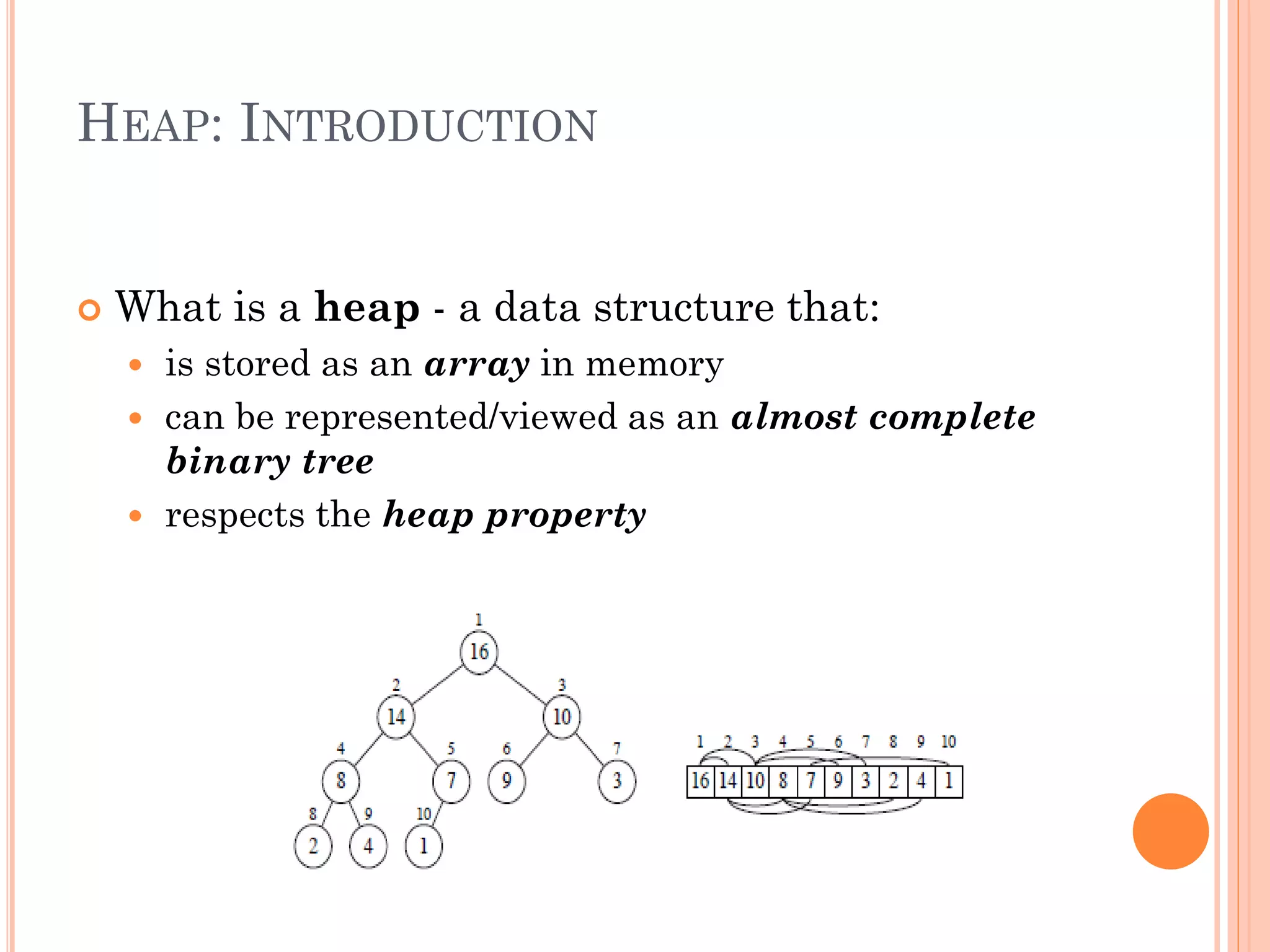
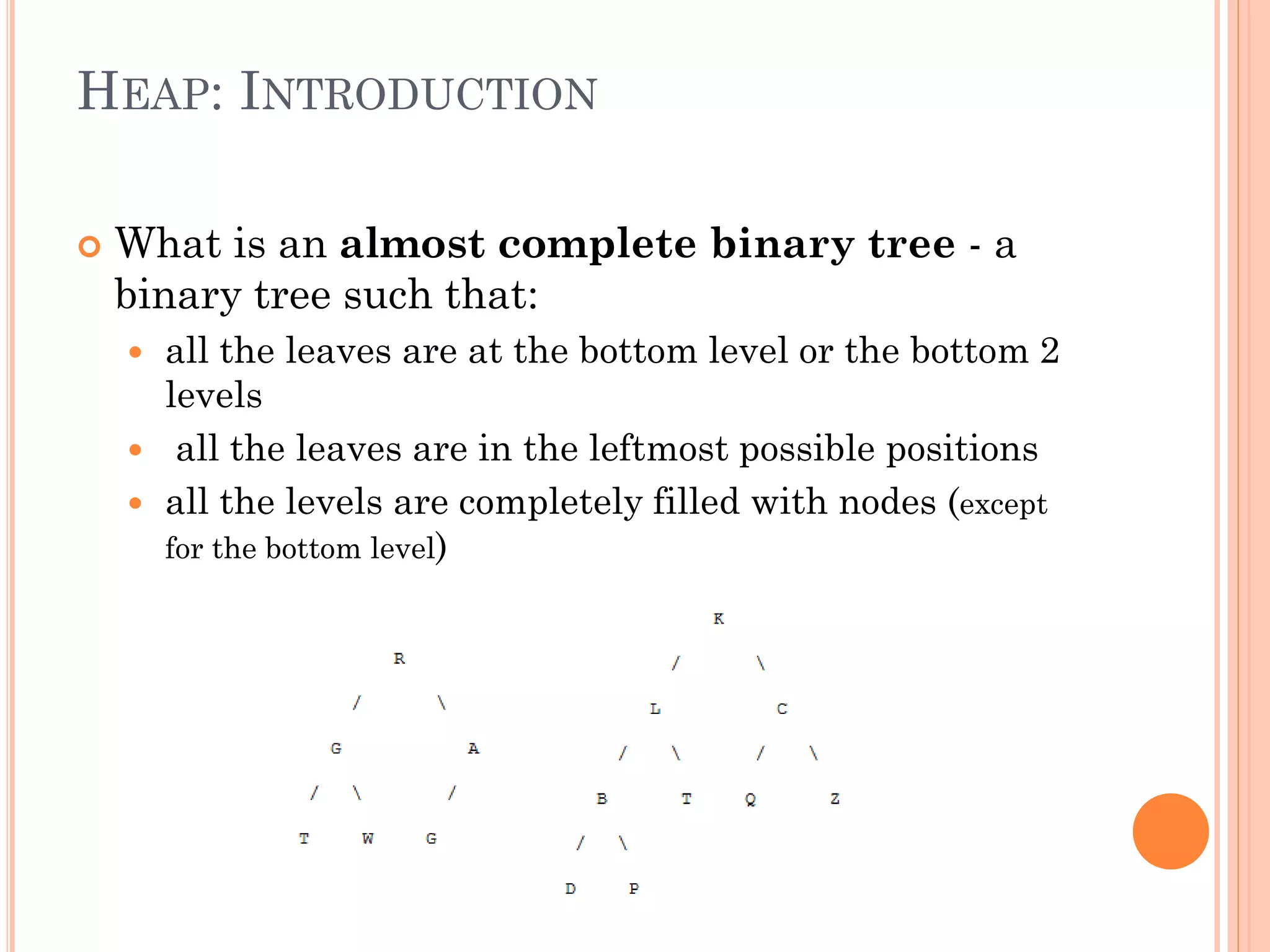
![HEAP: INTRODUCTION
The heap property:
Max heaps
For each node (except for the root): A[i] <= A[parent(i)]
Conclusion: The root (A[1]) contains the largest element
Min heaps
For each node (except the root): A[i] >= A[parent(i)]
Conclusion: The root (A[1]) contains the smallest element
!! Heap Sort uses max heaps](https://image.slidesharecdn.com/datastructuresandalgorithms-lab10-140504144639-phpapp02/75/Data-structures-and-algorithms-lab10-5-2048.jpg)
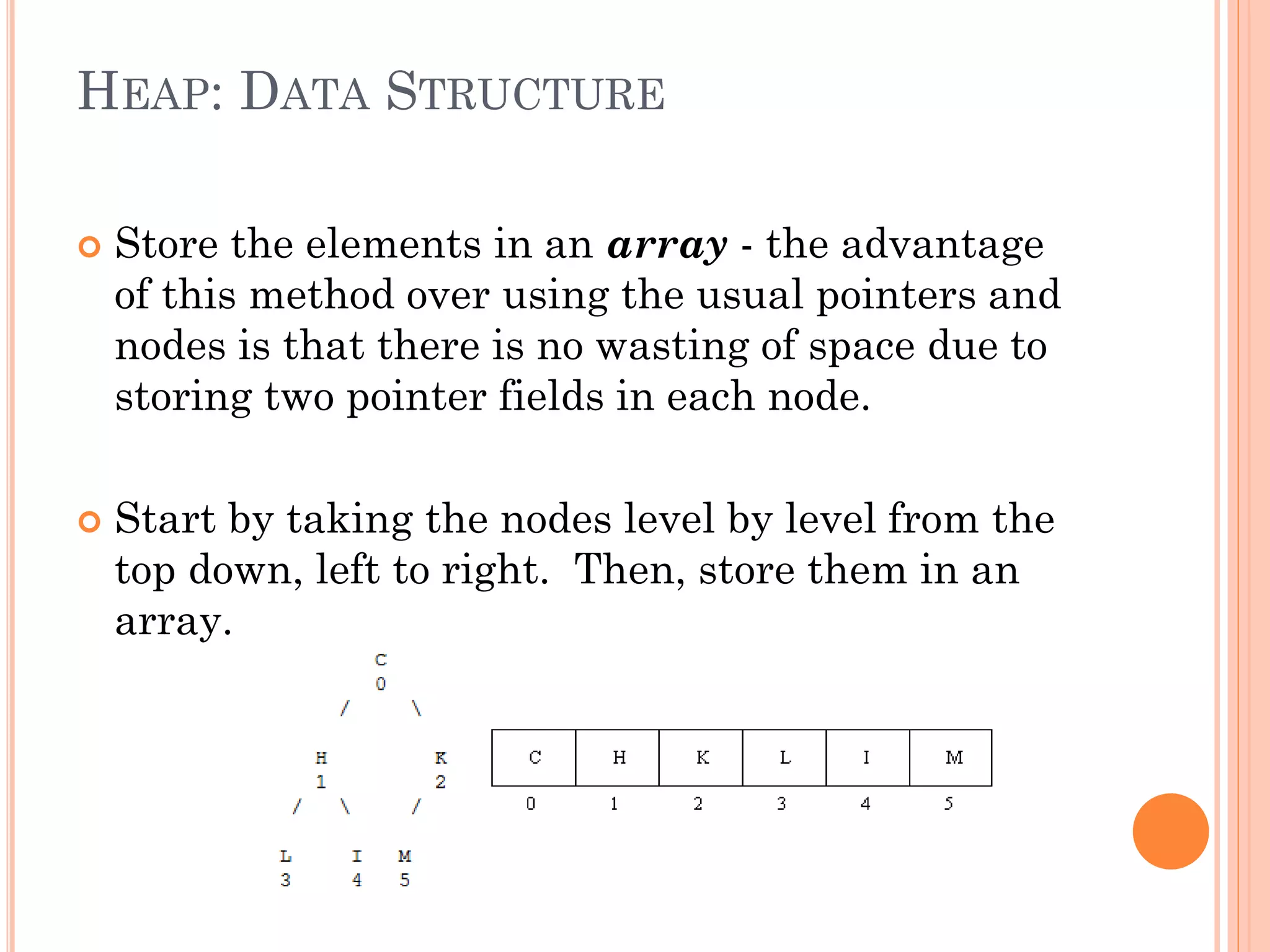
![HEAP: DATA STRUCTURE
An array A[0..n] can be represented as a binary
tree:
A[0] –root of the tree
Parent of A[i] = parent(i) = A[(i-1)/2]
Left child of A[i] = left(i) = A[2*i+1]
Right child of A[i] = right(i) = A[2*(i+ 1)]
Height of the heap: Θ(log n)
Number of nodes from the root to the farthest leaf](https://image.slidesharecdn.com/datastructuresandalgorithms-lab10-140504144639-phpapp02/75/Data-structures-and-algorithms-lab10-7-2048.jpg)
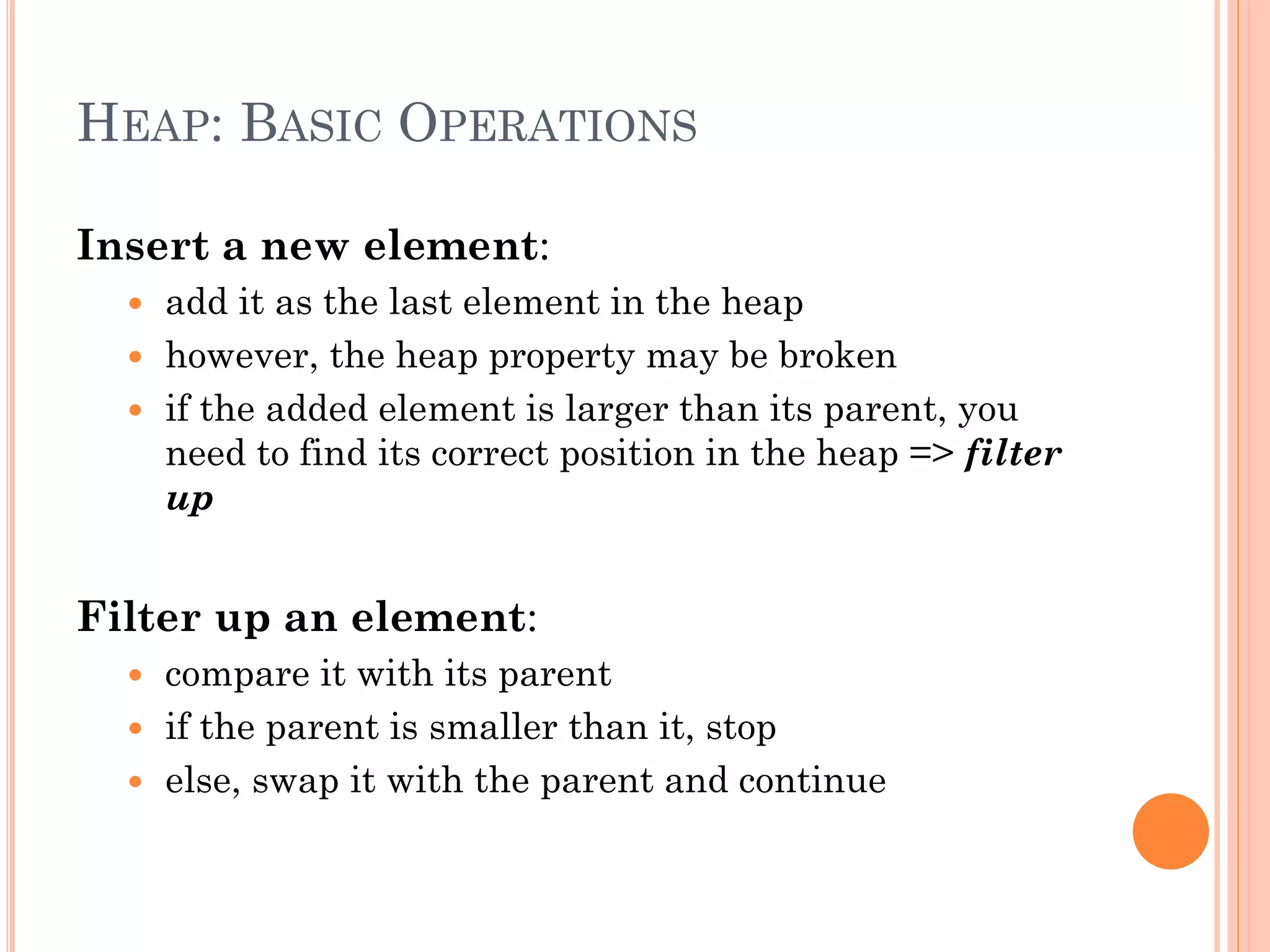
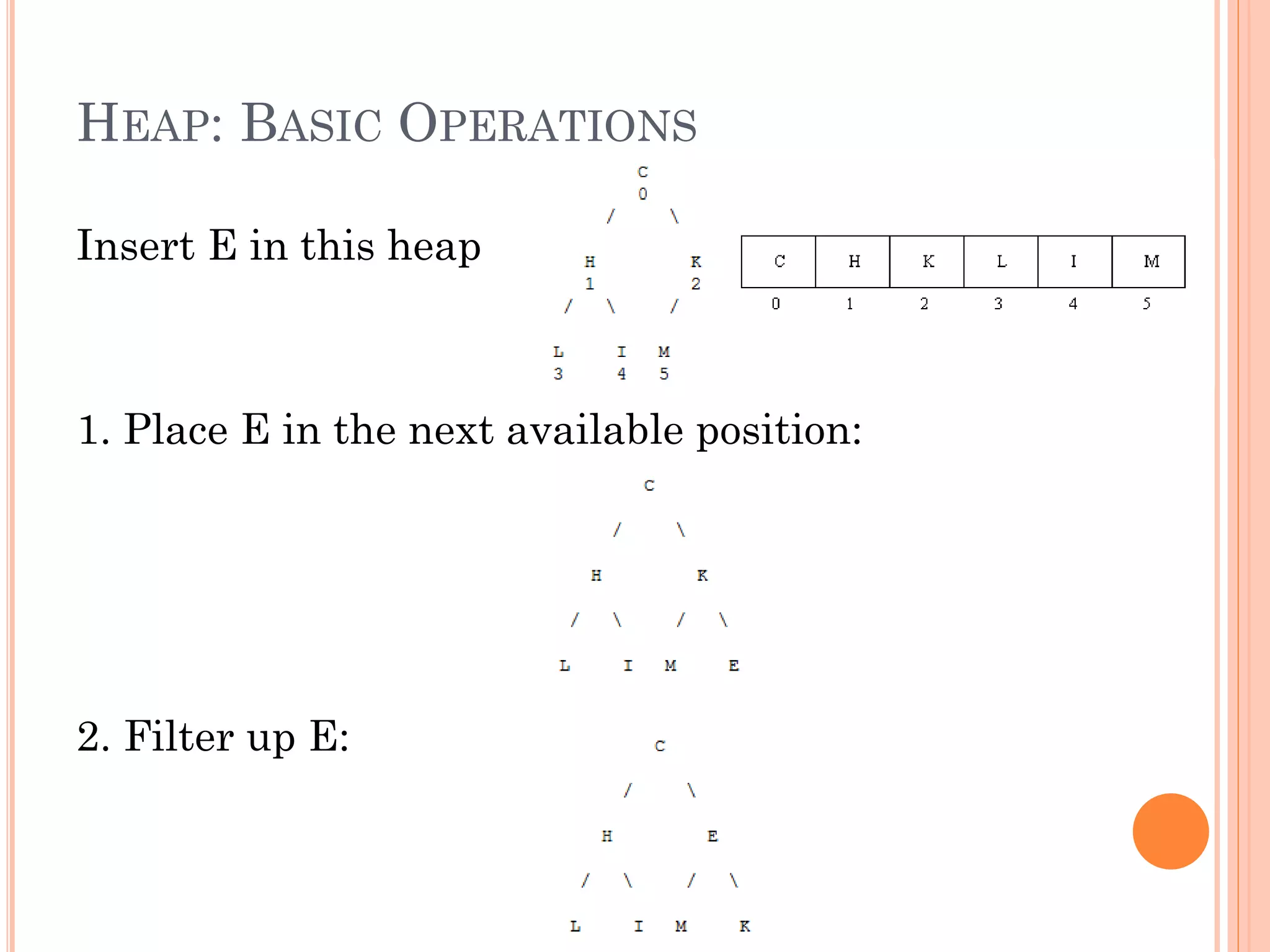
![HEAP: BASIC OPERATIONS
Delete ( extract min/max):
simply remove A[0] (the root element)
however, the heap is broken as it has no root element
need to find a new root
move the last element in the heap as the new root
now, the heap property is lost (almost certainly) =>
need to filter down
Filter down an element:
compare it to its children
if it is larger than both children, stop
else, swap it with the largest child and continue](https://image.slidesharecdn.com/datastructuresandalgorithms-lab10-140504144639-phpapp02/75/Data-structures-and-algorithms-lab10-10-2048.jpg)
